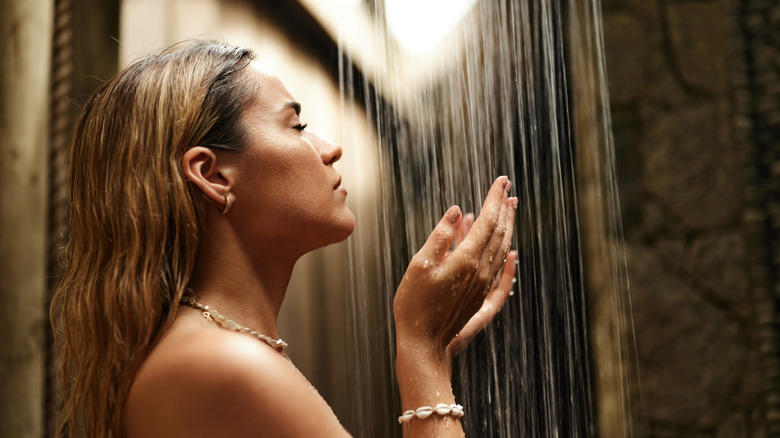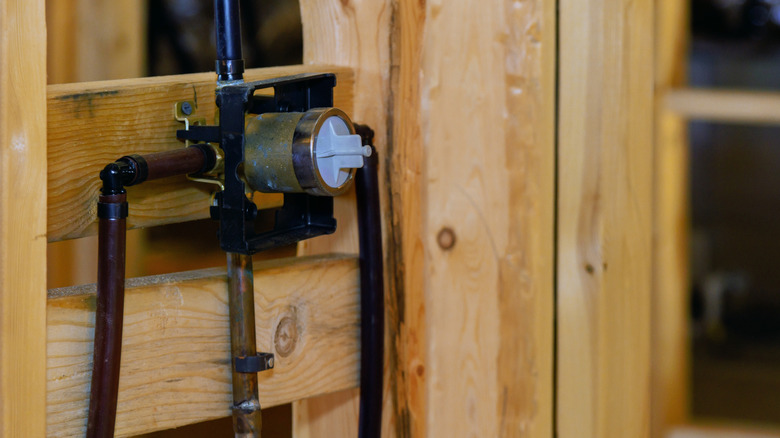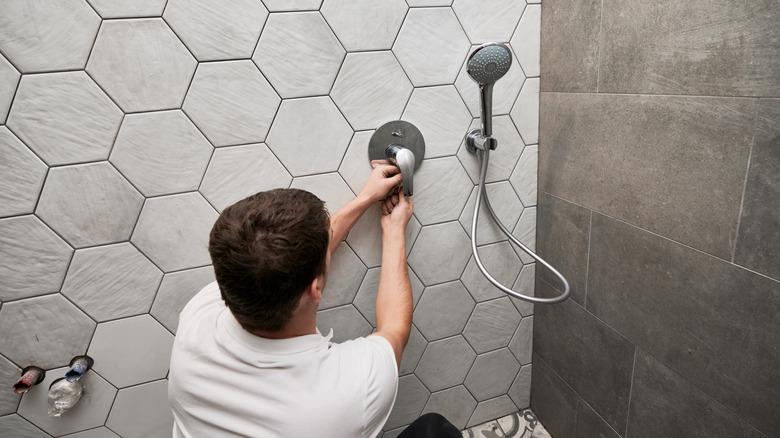Not All Shower Valves Are Made Equal. Here's How To Choose The Best One
We may receive a commission on purchases made from links.
Whether you take a cold one in the morning to wake up, or a warm one at night to wind down, it's hard to overstate the relaxation and health benefits of a good shower. Fluffy towels, your favorite scent, and finding the perfect setting on your shower head can take the experience from good to great. But your shower valve, a hidden plumbing device that controls both the temperature and flow of water, is one of the unsung heroes when it's time to splish and splash. From thermostatic valves that protect you from scalding temperatures to diverter valves that redirect water from your shower head to the bathtub, not all shower valves are made equal. To choose the best one, it's important to consider your desired features, overall budget, and existing plumbing connections.
There are a variety of things you should consider when picking out a shower head. When you're standing in the bath aisle at a store and considering dozens of shower faucets in different sizes and finishes, it's easy to forget that you'll also need an accompanying shower valve that pairs with your shower head, tub spout, and faucet handles or controls. Most of the time, shower valves are installed out of sight. They are typically tucked behind the wall where the faucet handle and tub spout are located, so picking the right shower valve isn't about finding one in the perfect finish. It's about picking one with all the right features.
Understanding the different types of shower valves
Putting in a new valve is one of the plumbing projects best left to the professionals, but if you're determined to do it yourself, the first step is figuring out which type of shower valve you have. Pressure-balancing (PB) valves are the most affordable, which also makes them the most common. They work by restricting the amount of hot and cold water through a single handle that you turn left and right or up and down to control. If you're planning an upgrade to your shower but are working with a limited budget, choose a shower system like the highly-rated gotonovo Rainfall Bathroom Shower Head and Handle Set that comes with its own pressure-balancing valve. The major downside to this type of valve is that there is only one control for both the water pressure and temperature.
If you want a little more control over your showering experience, a thermostatic (TS) valve may be a better choice. TS valve shower systems, like the Iriber 12 Inch Rainfall Shower Head, keep the water pressure and temperature consistent through a heat-sensitive element that expands or contracts to release just the right amount of water, at the right temperature. Because they are more complex, these valves are often more expensive.
There are two other types of shower valves that you may want to consider. Choose a shower diverter valve for combination tub-shower units to direct the flow of water to either the shower head or the tub. When you need to control the flow of water between multiple shower heads or handheld faucets, or want to use both at the same time, a shower transfer valve is ideal.
Consider plumbing codes and compatibility with your existing system
Have you ever been enjoying your shower, shampooing your hair, or shaving your legs, only to suddenly be blasted with freezing cold or boiling hot water? The culprit is often a family member flushing a toilet or starting a load of laundry, not realizing that your shower doesn't have a pressure-balancing valve correctly installed. This is frequently the case in older homes with showers that predate today's plumbing code requirements. Both pressure-balancing and thermostatic valves can prevent this uncomfortable shower experience by regulating the water temperature.
Don't forget that PB and TS valves control the temperature and flow of water into your shower, and diverter and transfer valves control the direction of that water. This makes diverter and transfer valves an additional plumbing device option that can increase both the complexity and cost of your bathroom remodeling project. The same can be said for additional ports on your shower valve, which may be necessary depending on the complexity of your system. For instance, if you have dual shower heads, a handheld faucet, and a tub spout, you'll need both a complex shower system kit and a multi-port shower valve that can accommodate it.
Last but not least, consider compatibility. Even if you're gutting your entire bathroom before completing a shower upgrade that will make you never want to get out, it's important to pick a valve that works with your existing pipes. And it's a good idea to pick a shower valve made by the same manufacturer as your shower system (if the valve doesn't come included).


